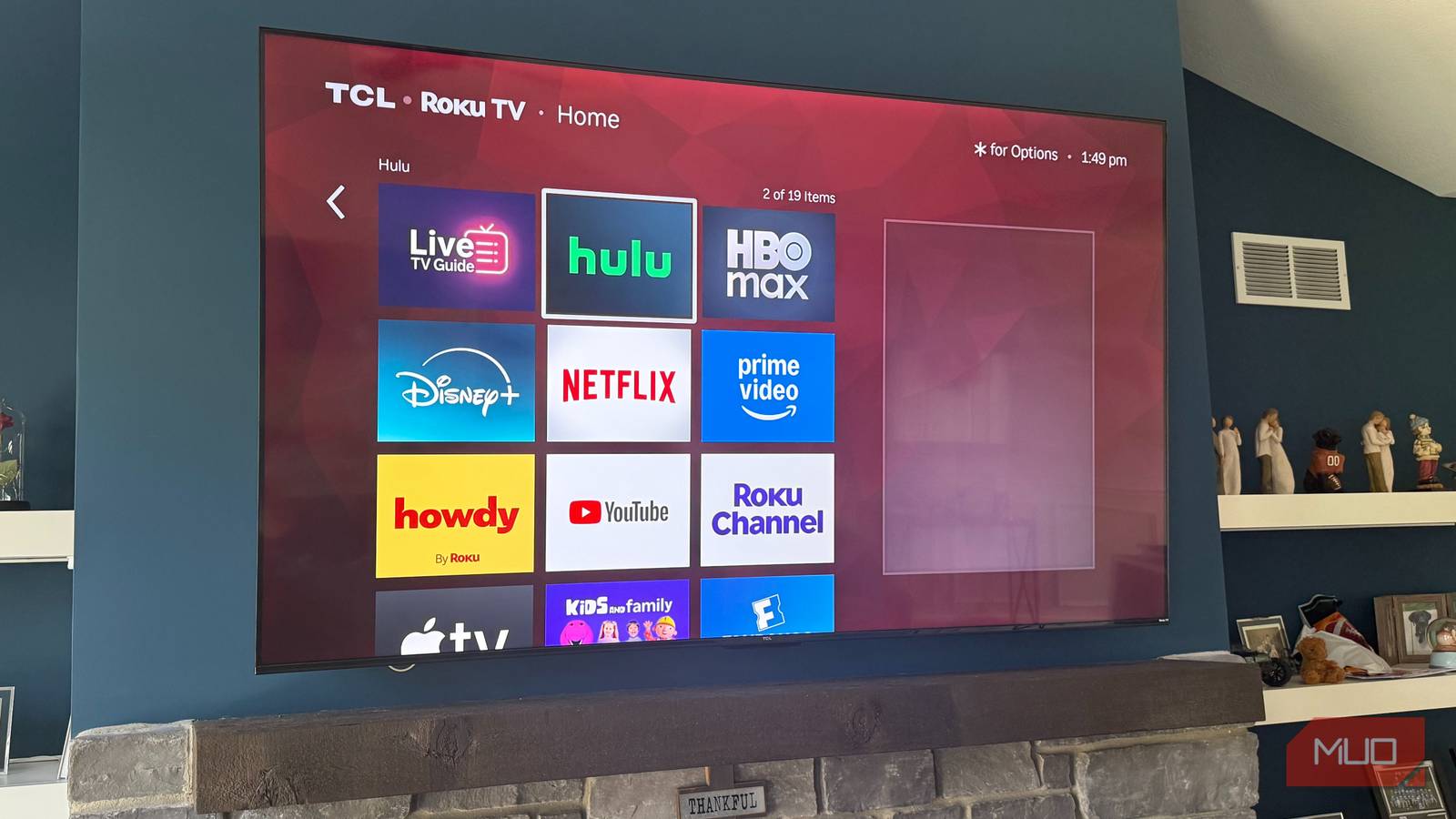I thought smart TVs would make my life easier. What I got instead was endless frustration. My four Roku TCL Smart TVs crawled through menus, took forever to load apps, and bombarded me with ads at every turn. I was thinking about replacing them when I tried something different: blocking ads through my router. This simple change made my TVs run faster than they had since the day I bought them.
The change happened immediately. Navigating menus went from painfully slow to lightning quick. Apps that used to take ages to start up now open in seconds. What had been a chore became actually pleasant to use. All it took was configuring my Ubiquiti router to block ads across my entire network, and suddenly my smart TVs remembered how to be smart.
Why smart TV ads slow everything down
The hidden performance cost of advertisement loading
Here’s what I didn’t know: smart TVs are essentially computers that juggle two different tasks. You want to watch Netflix, but your TV is simultaneously downloading promotional banners, video previews, and collecting data about your viewing habits. This background activity occurs without your notice, but it consumes the limited processing power and memory your TV has available.
Even expensive smart TVs run on pretty basic hardware compared to your laptop or phone. When they’re forced to handle your streaming plus all the advertising garbage, everything slows to a crawl. The situation worsens when multiple ad networks compete for the same limited resources.
Your TV is also constantly phoning home to report what you’re watching, when you’re watching it, and how you interact with different content. This data collection happens 24/7, using up bandwidth and processing cycles that should be dedicated to your actual viewing experience. The real fix isn’t buying a faster TV—it’s stopping all this unnecessary background nonsense.
Setting up network-level ad blocking with Ubiquiti
Configuring the UniFi Gateway ad-blocking feature



My Ubiquiti router has a feature that blocks ads for every device on my network by stopping advertising requests before they reach my TVs. This works great for smart TVs because you don’t need to configure each device individually—the router handles everything automatically.
I opened the UniFi Network app and went to Settings. There’s a Security section (Security > Protection > Ad Blocking) with an ad blocking toggle that I turned on using the default filter lists. The router now uses DNS filtering to block known advertising domains, which means my TVs can’t load promotional content even if they try.
The entire setup took less than a minute, and it worked immediately on all my devices. This differs from browser-based ad blockers because it works on any device and any app on my network—the advertising requests are stopped at the network level before they ever reach my TVs. All four of my Roku TVs got the same performance boost without me touching a single setting on any of them. Well, I did have to add a powerline adapter to the smart TV in my three-seasons room, but that was because of a poor Wi-Fi signal, not ads.
Before and after: a night and day difference
The performance improvement was immediately noticeable across all four TVs. Clicking through menus, which used to involve annoying delays, became instant. Apps that previously took 10–15 seconds to load now start in 3–4 seconds. My home screen went from being a slow, cluttered mess to something that actually responded when I clicked on it.
The Roku interface felt completely different. Without all that advertising content hogging resources, everything became smooth and responsive. I could scroll through my app list without those weird pauses that used to happen when I hovered over different options.
My streaming experience improved dramatically, too. Services like Netflix and Hulu started up faster and felt much more responsive when browsing content. Sure, these apps still show their own ads, but cutting out all the system-level promotional garbage freed up enough horsepower to make everything run smoothly. My TVs finally worked like the capable devices I thought I was buying instead of sluggish billboards that happened to stream video.
Alternative methods for router-level ad blocking
Pi-hole and other network solutions
My Ubiquiti setup worked great, but there are other ways to get similar results if you don’t have UniFi gear. Pi-hole is probably the most well-known option—it’s basically a tiny computer running on a Raspberry Pi that acts as your network’s ad-blocking DNS server. You get way more control over what gets blocked and can see detailed stats about all the junk your devices try to download.
Many regular routers have started including ad-blocking features too. ASUS routers offer AiProtection, while some TP-Link models include HomeCare security features with ad-blocking capabilities. The concept is the same—they intercept and block advertising requests before your devices ever see them.
Another option is switching to DNS services like AdGuard DNS or Quad9. Instead of using your internet provider’s DNS servers, you configure your router to use these ad-blocking alternatives. You can also use these browser extensions to block ads on your computer. I haven’t needed to test these other options since my Ubiquiti solution solved the problem completely, but they’re worth considering if you want ad blocking without buying new hardware. The main thing is picking something that works with whatever network setup you already have.
Your smart TV can feel new again
I didn’t need to spend hundreds of dollars on new hardware or mess around with complicated settings to fix my smart TV problems. Blocking ads at the network level stopped all the background nonsense that was bogging down my TVs. The difference was so obvious that I kicked myself for not trying it months earlier.
If your smart TV feels slow and unresponsive, there’s a good chance ads are the real problem. You can try Ubiquiti’s built-in blocking, like I did, set up a Pi-hole, or switch to ad-blocking DNS servers. Any of these approaches can make your current TV feel fast and responsive again, no matter how old it is.











